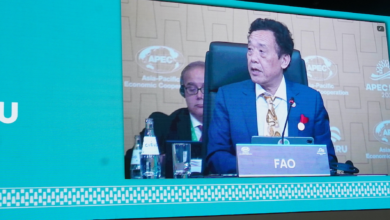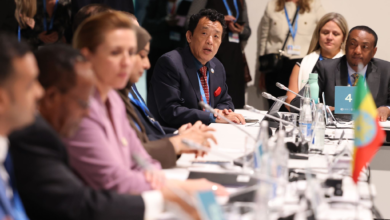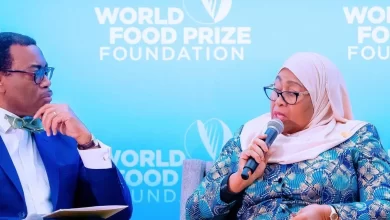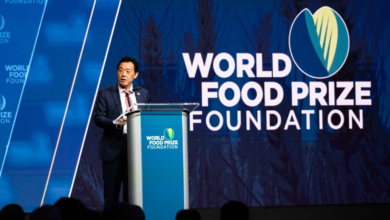Funding Your Agricultural Dream with the Global Agriculture and Food Security Programme
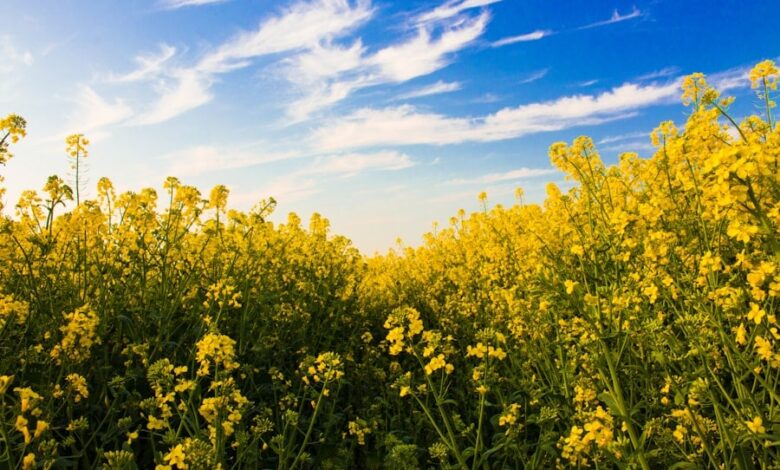
The Global Agriculture and Food Security Programme (GAFSP) is a multi-donor trust fund established to address the pressing challenges of food insecurity and agricultural development in low-income countries. Launched in 2010, GAFSP aims to enhance food security by providing financial resources to improve agricultural productivity, strengthen food systems, and promote sustainable practices.
The programme operates under the auspices of the World Bank and collaborates with various stakeholders, including governments, non-governmental organizations, and private sector entities.
According to fundsforNGOs, by focusing on smallholder farmers, GAFSP seeks to empower those who are often the most vulnerable to food insecurity, thereby fostering resilience and promoting inclusive economic growth. At its core, GAFSP recognizes that food security is not merely about increasing agricultural output; it encompasses a holistic approach that includes access to markets, nutrition, and sustainable resource management. The programme emphasizes the importance of integrating gender considerations into agricultural development, ensuring that women farmers have equal access to resources and opportunities.
By investing in infrastructure, technology, and capacity building, GAFSP aims to create an enabling environment for agricultural innovation and productivity. This comprehensive strategy is essential for addressing the complex challenges posed by climate change, population growth, and shifting dietary patterns, all of which threaten global food security.
Key Takeaways
- The Global Agriculture and Food Security Programme aims to address food insecurity and poverty by providing funding for agricultural projects in developing countries.
- Eligibility for funding includes being a low-income or lower-middle-income country, having a national agriculture and food security investment plan, and demonstrating a commitment to gender equality and environmental sustainability.
- Funding through the programme can be in the form of grants, concessional loans, or guarantees, and can support a wide range of agricultural activities such as infrastructure development, capacity building, and policy and institutional reforms.
- Success stories from the programme highlight how smallholder farmers have been able to increase their productivity, income, and resilience to climate change through access to funding and support.
- To maximize chances of securing funding, applicants should ensure their proposals align with the programme’s priorities, demonstrate a clear impact on food security and poverty reduction, and have strong partnerships and community engagement.
- The future of agricultural funding is expected to focus on climate-smart agriculture, digital innovation, and private sector engagement, presenting opportunities for sustainable and inclusive agricultural development.
Eligibility and Application Process for Funding
- To access funding through the GAFSP, applicants must meet specific eligibility criteria that vary depending on the type of funding sought. Generally, the programme targets low-income countries that are eligible for International Development Association (IDA) assistance. This includes nations facing significant challenges related to food security and agricultural productivity.
Additionally, applicants must demonstrate a commitment to implementing policies that promote sustainable agricultural practices and enhance food systems. The programme encourages collaboration among various stakeholders, including government agencies, civil society organizations, and private sector actors, to ensure a comprehensive approach to addressing food security challenges. The application process for GAFSP funding is structured yet flexible, allowing for a range of project proposals that align with the programme’s objectives.
Interested parties typically begin by submitting a concept note outlining their proposed project, which should detail the objectives, expected outcomes, and alignment with national agricultural strategies. Following an initial review, successful applicants are invited to submit a full proposal that includes a detailed budget and implementation plan. Throughout this process, GAFSP provides technical assistance to help applicants refine their proposals and ensure they meet the necessary standards.
This support is crucial for enhancing the quality of submissions and increasing the likelihood of securing funding.
Types of Funding Available through the Programme
GAFSP offers several types of funding mechanisms designed to cater to diverse needs within the agricultural sector. One of the primary funding streams is the Public Sector Window, which provides grants and concessional financing to governments for projects aimed at improving agricultural productivity and food security. This funding is often directed toward large-scale initiatives that require significant investment in infrastructure, research, and capacity building.
By supporting government-led projects, GAFSP aims to create systemic changes that can benefit entire communities and regions. In addition to the Public Sector Window, GAFSP also features a Private Sector Window that focuses on innovative solutions to agricultural challenges. This funding stream is designed to support private enterprises that are working to enhance agricultural value chains, improve market access for smallholder farmers, and develop sustainable business models.
By investing in private sector initiatives, GAFSP seeks to stimulate economic growth and create jobs while ensuring that smallholder farmers can benefit from increased market opportunities. Furthermore, GAFSP has established a Civil Society Window to support grassroots organizations working directly with communities to address food security issues. This multifaceted approach allows GAFSP to address the diverse needs of the agricultural sector while fostering collaboration among various stakeholders.
Success Stories: How Farmers Have Benefited from the Programme
The impact of GAFSP funding can be seen in numerous success stories from around the world, where smallholder farmers have experienced transformative changes in their livelihoods. For instance, in Ethiopia, a project funded by GAFSP focused on improving access to irrigation systems for smallholder farmers in drought-prone areas. By providing training on efficient water management techniques and investing in infrastructure such as canals and reservoirs, the project enabled farmers to increase their crop yields significantly.
As a result, many families were able to diversify their income sources and improve their overall food security. This success not only benefited individual farmers but also contributed to community resilience against climate-related shocks. Another compelling example comes from Bangladesh, where GAFSP funding supported a program aimed at enhancing the productivity of rice farmers through improved seed varieties and sustainable farming practices.
The initiative provided farmers with access to high-quality seeds, training on integrated pest management, and resources for soil health improvement. As a result, participating farmers reported substantial increases in rice production, leading to higher incomes and improved nutrition for their families. The programme also fostered collaboration among farmers through the establishment of cooperatives, enabling them to share knowledge and resources while gaining better access to markets.
These success stories illustrate how targeted interventions can empower smallholder farmers and create lasting positive change in their communities.
Tips for Maximizing Your Chances of Securing Funding
Securing funding from GAFSP can be competitive; therefore, applicants should take strategic steps to enhance their proposals’ chances of success. First and foremost, it is essential to align project objectives with GAFSP’s overarching goals of improving food security and promoting sustainable agricultural practices. Applicants should conduct thorough research on existing challenges within their target communities and demonstrate how their proposed solutions address these issues effectively.
Providing data-driven evidence of need can significantly strengthen a proposal by showcasing the potential impact of the project. Additionally, collaboration is key when applying for GAFSP funding. Engaging with local stakeholders—including government agencies, NGOs, and community organizations—can enhance project design and implementation strategies.
A collaborative approach not only enriches the proposal but also demonstrates a commitment to inclusivity and shared responsibility in addressing food security challenges. Furthermore, applicants should be prepared to articulate clear monitoring and evaluation plans that outline how they will measure project success over time. By presenting a well-rounded proposal that emphasizes collaboration, evidence-based solutions, and robust evaluation methods, applicants can significantly improve their chances of securing funding from GAFSP.
The Future of Agricultural Funding: Trends and Opportunities
As global challenges related to food security continue to evolve, so too does the landscape of agricultural funding. One notable trend is the increasing emphasis on climate-smart agriculture as a means of enhancing resilience among smallholder farmers. Funding programmes are increasingly prioritizing projects that incorporate sustainable practices aimed at mitigating climate change impacts while promoting food security.
This shift presents opportunities for innovative solutions that leverage technology—such as precision agriculture tools or mobile applications for market access—to improve productivity while minimizing environmental footprints. Moreover, there is a growing recognition of the importance of nutrition-sensitive agriculture in addressing food insecurity. Future funding initiatives are likely to focus on projects that not only increase agricultural output but also enhance nutritional outcomes for vulnerable populations.
This holistic approach aligns with global efforts to achieve Sustainable Development Goals (SDGs), particularly those related to zero hunger and good health. As such, organizations seeking funding will need to demonstrate how their projects contribute not only to agricultural productivity but also to improved nutrition and health outcomes within communities. By staying attuned to these trends and aligning proposals with emerging priorities in agricultural funding, stakeholders can position themselves effectively for future opportunities in this critical sector.
If you are exploring funding opportunities for your agricultural initiatives, you might also be interested in learning about other related grants that could support your environmental or biodiversity projects. For instance, the Madagascar and the Indian Ocean Islands Biodiversity Hotspot Small Grants Programme offers up to US$50,000 for projects that aim to conserve the unique biodiversity of this region. This funding could be particularly relevant if your agricultural dream includes elements of environmental sustainability or conservation in these biodiverse areas.
Frequently Asked Questions
What is the Global Agriculture and Food Security Programme (GAFSP)?
The Global Agriculture and Food Security Programme (GAFSP) is a multilateral mechanism that supports low-income countries in their efforts to boost agricultural productivity and improve food security.
How does GAFSP support agricultural projects?
GAFSP provides funding for agricultural projects in low-income countries through a combination of grants, concessional loans, and technical assistance. These projects aim to increase agricultural productivity, improve food security, and promote sustainable development.
Who can apply for funding from GAFSP?
Low-income countries, as well as organizations and entities operating in those countries, are eligible to apply for funding from GAFSP. This includes government agencies, non-governmental organizations, and private sector entities.
What types of agricultural projects does GAFSP fund?
GAFSP funds a wide range of agricultural projects, including those focused on increasing crop yields, improving livestock production, enhancing agricultural infrastructure, and promoting sustainable farming practices. Projects that aim to improve food security and nutrition are also eligible for funding.
How can interested parties apply for funding from GAFSP?
Interested parties can apply for funding from GAFSP by contacting the programme’s implementing partners, such as the World Bank, the International Fund for Agricultural Development (IFAD), and the Food and Agriculture Organization (FAO). These partners can provide guidance on the application process and eligibility criteria.


